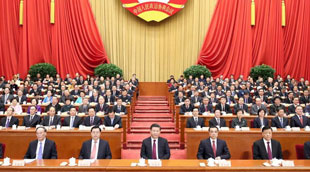
By Agather Atuhaire
Uganda would probably not have over 30 percent of its citizens surviving on less than a dollar per day and about half of the population unemployed if one of its top potential industries was not underexploited.
Tourism is Uganda’s second biggest foreign exchange earner, directly employing more than 7 percent of the population. Tourism is the fastest growing industry in the world and is a sector worth investing in for a poor country like Uganda with a balance of trade deficit of more than $2 billion dollars.
Although tourism has a high employment multiplier effect and employs about 450,000 people in Uganda and over 260 million worldwide, most countries in Africa do not recognise its contribution with corresponding support to the sector.
In 2010 Africa accounted for only 3.4 percent of global tourism receipts and 5.2 percent of tourist arrivals, despite having about 15 percent of the world’s population.

The latest Travel and Tourism Africa’s Competitiveness report observes that most African countries do not appreciate the benefits that the sector offers.
“Africa’s achievements in capturing tourism revenues and arrivals must be understood in the context of the Continent’s relatively unexploited tourism potential,” reads the report which
ranks Uganda 115th in travel and tourism competitiveness globally. Rwanda, Tunisia, Namibia, and Kenya are ranked 8th, 18th, 22nd and 26th respectively as among the top performers.
Uganda has one of the highest tourism potentials in the world, with fantastic natural scenery and is home to half of the world’s remaining mountain gorilla population. It offers world-class white water rafting at the source of the Nile and has some of the region’s most peaceful national parks where wildlife viewing doesn’t involve long waits in queue behind a dozen or more vehicles. That’s not all. Uganda also has the highest mountain range in Africa, the Rwenzori Mountains; one of the most powerful waterfalls in the world, Murchison Falls; the highest primate density in the world, in Kibaale Forest National Park; and more diverse tourist attractions countrywide.
Uganda Tourism Association President Amos Wekesa says there is no country in the world as naturally gifted as Uganda. “Uganda has 11% of the world’s bird species, 50% in Africa and 73% in East Africa,” he said.
There are only 7 Bahai Temples in the world and the only one in Africa is in Kanyanya in Kampala and the country hosts 7 percent of the world’s mammals and 6.8 percent of the world’s butterfly species.
Uganda is the second best country next to Ecuador with favourable weather conditions. The list for Uganda’s natural endowments is endless but they have remained largely an untapped potential, which many have blamed on the government’s poor prioritisation.
It’s strange that a sector which contributes 24 percent of the country’s foreign exchange earnings and is the second top contributor to GDP is the least funded by the government.
Uganda has the highest potential tourist attractions in the region but her regional neighbours like Kenya and Rwanda have overtaken her because of serious strategic investment in marketing their tourism sector and building their national image.
“Kenya puts more than $10 million into tourism marketing, Tanzania allocates $8 million to the sector, Rwanda puts $5 million into the industry. No one can compare this amount of money to just about Shs8 billion that Uganda allocates to tourism,” Wekesa says.
Indeed serious investment in tourism can yield dividends and Kenya’s Rwanda’s and Tanzania’s efforts have not been in vain. According to the 2009 tourism statistics, 2.4 million tourists visited Kenya’s 29 national parks and game reserves, 714,000 tourists visited Tanzania’s 31 national parks and game reserves while only 65,000 tourists visited Uganda’s 22 national parks. This means that for every game park visited, Kenya would get 82,758 tourists (28 times more than Uganda), Tanzania 23,032 (about 8 times more than Uganda) while Uganda trailed miserably with 2,954 visitors.
There are no statistics of exact revenues Uganda earns from bird watching but it’s clear that given the variety and numerical superiority of her bird species, earnings from bird watching alone would be enormous.
According to Wekesa, America which has not more than 400 bird species earns $4 billion (approximately 9 trillion, which is nearly the entire annual national budget of Uganda) from bird watching. Yet Uganda with 606 species in the Queen Elizabeth National Park alone earns less than $50m from bird watching and $650m from the entire tourism industry annually. This implies if Uganda developed her tourism industry, it could raise enough money to fund half of its national budget from the sector alone.
“From only bird watching, USA earns more than twice of what Uganda earns from its whole tourism sector,” Wekesa says.
Statistics show that Egypt earns $7 billion per year from tourism and $3 of this amount is generated from River Nile tourism alone, yet Uganda which is the source of the Nile earns peanuts from the river’s natural endowments. Although there is an excuse that tourism is still haunted by Uganda’s bad history of war during Amin’s reign of the 1970s, it pales in comparison to Rwanda which has just emerged from one of the worst genocides in world history 17 years ago yet it has overtaken Uganda which got rid of Amin more than 30 years ago.
Players in the tourism sector in Uganda say the biggest impediment is underfunding.
Many people agree that government is crippling the country’s best earning sector because of poor budgetary pioritisation and wasteful political expenditures. For example in this 2011/12 financial year, the government allocated Shs59 billion to State House, the president’s residence, which does not bring in any earnings into the economy, but gave a paltry Shs8 billion (about an 8th of State House budget) to Tourism, the country’s second contributor to GDP.
Manager of Gorilla Trekking Safaris, Fred Bukenya, says Uganda’s tourism marketing strategy is wanting compared to her neighbours to the extent that some potential tourists either don’t even know where Uganda is or think it is still being ruled by former tyrant, Amin.
“We still get questions like where is Uganda located or what does it have to offer,” Bukenya says
In May this year Tourism was separated from the Ministry of Trade, Tourism and Industry to become an autonomous ministry. Although it had been anticipated that its budget would be increased, the ministry was allocated only Shs8.2 billion, the same amount of money it had been receiving as sub-sector under the former Ministry of Trade, Tourism and Industry.
The Minister of Tourism Prof. Ephraim Kamuntu said the ministry was given much less than it needs.
Last week Kamuntu met with officials from Uganda tourism bodies; UTB, Uganda Wildlife Authority, Uganda Wildlife Education Centre and other officials from the ministry to discuss critical issues in the industry.
“Tourism has always been treated as just a department in MTTI and that is why it was always given inadequate resources,” Kamuntu argued.
He has proposed a number of strategies which he intends to table before parliament to seek funding. Part of the funding is the $500,000 for national geo-web portal and map campaign to tell people abroad more about Uganda, $250,000 for market research and $750,000 for private sector capacity building.
Kamuntu said it is not wise to underestimate the sector that contributes 9.2 percent to GDP and contributes about $700 million forex per annum even when it is the least funded.
He however said his worry is whether parliament will pass the budget expeditiously for him to start work.
“I hope that parliament sees the urgency of this budget. We need $7-10 million per year to enhance tourism,” he said.
However, the government also needs to do something on the political front. The incessant public protests has created an impression of unrest which scares away potential foreign tourists and investors.
Jessica Nakibule, the Director of Onyx Safaris, said the recent protests in the country have hurt her business. “Government needs to do something about these protests that are on a daily basis,” she said.
She said they have tried to market Uganda abroad but people tell them they cannot visit a country which has turned into a war zone. She lamented that her company used to get more than 30 clients a month but the number has shrunk to 5 clients since the protests broke out.
Wekesa urged the local media to give tourism positive coverage to mitigate the negative publicity that has portrayed Uganda as the axis of evil.
“When you talk about Uganda abroad, what comes in people’s minds is disease, protests and corruption and everyone is convinced nothing good can be found in a country like that,” he said.
Uganda has had the Walk to Work protests over the rising cost of living, traders’ strike over the falling Shilling and taxi drivers’ strike over exploitation by UTODA in the past four months.
Tourism faces another setback of poor infrastructure such as air travel, poor roads and poorly equipped hotels. Baguma Cuthbert, Chairman of Uganda Tourism Board, said tourists prefer Kenya where they travel by air to visit distant tourist destinations like from Nairobi to Mombasa and other places rather than come to Uganda to travel hundreds of miles on rough and potholed roads.
Another challenge for tourism is corruption. Even if funding is increased, there is no guarantee the money will be utilised properly. A good example is the $35m World Bank loan to the Uganda Wildlife Authority (UWA) for the construction of infrastructure in all the 10 national parks and 12 game reserves.
According to the preliminary revelations by the commission of inquiry currently investigating alleged abuse of the money, former ministers of tourism Kahinda Otafiire and his subordinate Serapio Rukundo were irregularly receiving money off the UWA project for other interests other than wildlife activities.
The tourism sector has got way too many setbacks. It needs high optimism to the level of Barrack Obama’s “Yes We Can” no matter the odds.
 The Independent Uganda: You get the Truth we Pay the Price
The Independent Uganda: You get the Truth we Pay the Price


